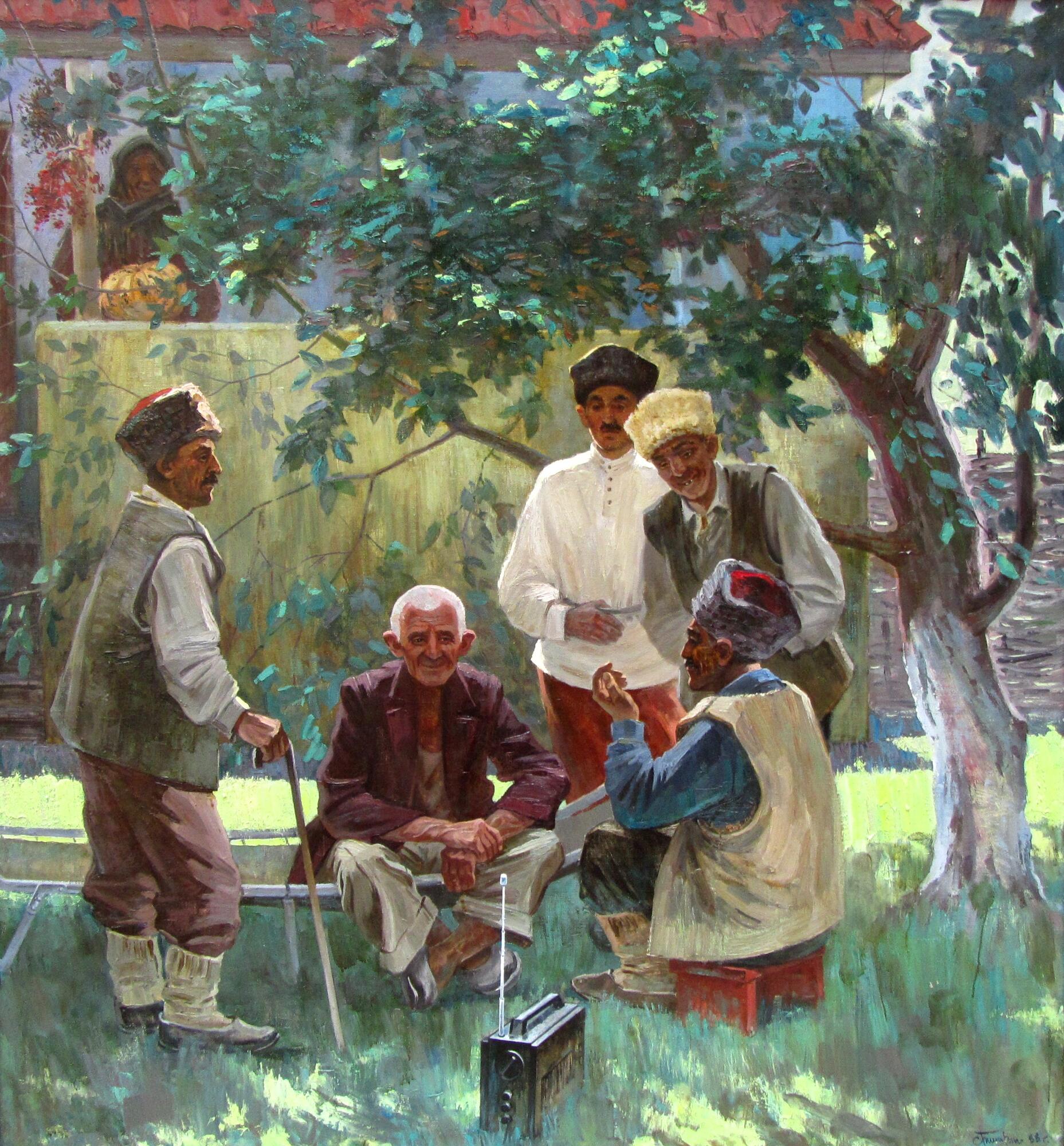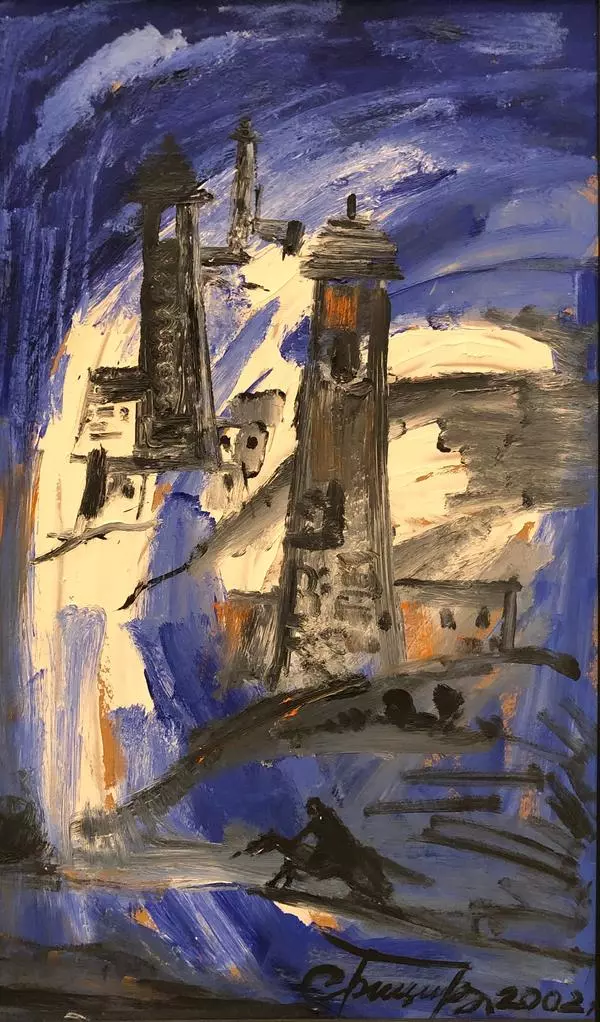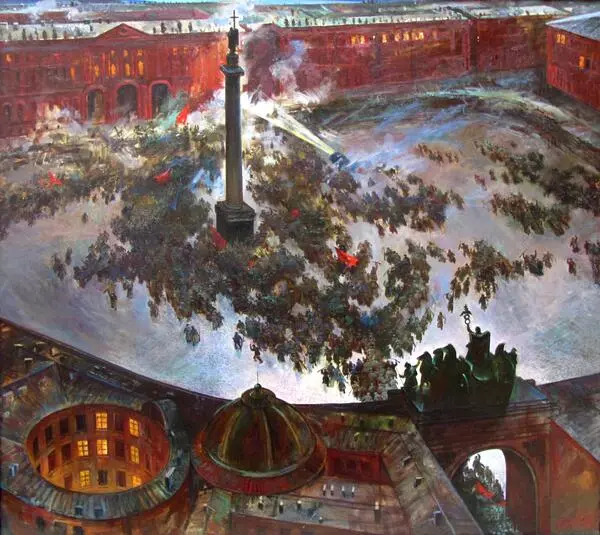The artist Said Bitsiraev painted “Old Men” in 1988. This is a genre work and represents a scene of everyday life: on a summer day, some old men met in the yard of the country house to listen to the radio and discuss the latest news. In the background, there is an old woman on the porch of the house who looks at them curiously.
All the characters in the picture are dressed in national Chechen clothes, except the one in the center. However, the men are portrayed without cherkeska — most of them are in shirts with a stand-up collar and woolen sleeveless jackets. That indicates their meeting is informal with close friends or relatives. Otherwise, being without cherkeska in a public was considered inappropriate for an elder man and only men who reached a great age could wear it unbuttoned.
The man in the center is dressed in a city-style jacket. Unlike the others, he does not wear a papakha headdress: he may be the owner of the house, in which case he does not need any headdress. It was not acceptable to take off papakha even indoors. It is impossible to make out the woman’s clothes as she is behind a wall. However, one can guess: according to the tradition, women must wear a loose dress without a belt, which covers the figure except for the wrists. The woman wears a headscarf common in Islamic tradition.
Said Bitsiraev was born in 1954 in a Kirghiz city Kadomjay: his parents were exiled there in the 1940s. The family was able to come back home to the Noyber settlement, or Suvorov-Yurt only in 1957.
A 15-year-old Said Bitsiraev entered the Krasnodar Art School and finished it in 1973. Later he moved to Leningrad to enter the Institute of Art, Sculpture and Architecture named after Ilya Repin at the Academy of Arts of the USSR. He worked then at one of the children’s art schools in Leningrad. From 1983 till this day, he has been teaching at the Department of Painting at the Saint Petersburg Stieglitz State Academy of Art and Design.
All the characters in the picture are dressed in national Chechen clothes, except the one in the center. However, the men are portrayed without cherkeska — most of them are in shirts with a stand-up collar and woolen sleeveless jackets. That indicates their meeting is informal with close friends or relatives. Otherwise, being without cherkeska in a public was considered inappropriate for an elder man and only men who reached a great age could wear it unbuttoned.
The man in the center is dressed in a city-style jacket. Unlike the others, he does not wear a papakha headdress: he may be the owner of the house, in which case he does not need any headdress. It was not acceptable to take off papakha even indoors. It is impossible to make out the woman’s clothes as she is behind a wall. However, one can guess: according to the tradition, women must wear a loose dress without a belt, which covers the figure except for the wrists. The woman wears a headscarf common in Islamic tradition.
Said Bitsiraev was born in 1954 in a Kirghiz city Kadomjay: his parents were exiled there in the 1940s. The family was able to come back home to the Noyber settlement, or Suvorov-Yurt only in 1957.
A 15-year-old Said Bitsiraev entered the Krasnodar Art School and finished it in 1973. Later he moved to Leningrad to enter the Institute of Art, Sculpture and Architecture named after Ilya Repin at the Academy of Arts of the USSR. He worked then at one of the children’s art schools in Leningrad. From 1983 till this day, he has been teaching at the Department of Painting at the Saint Petersburg Stieglitz State Academy of Art and Design.






